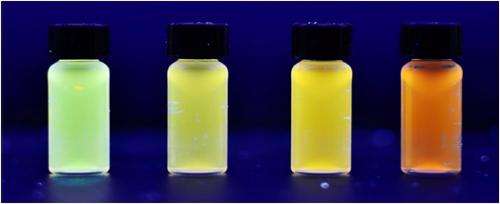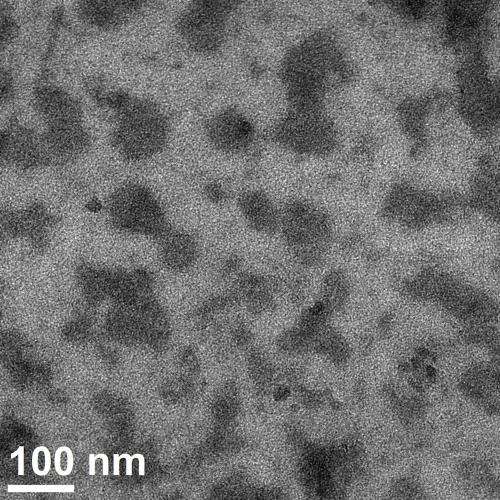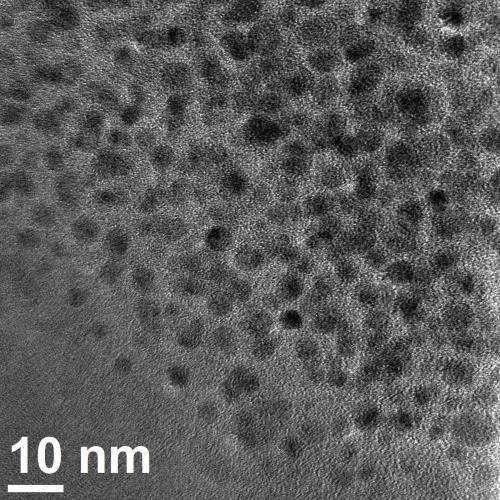Researchers fine-tune quantum dots from coal

Graphene quantum dots made from coal, introduced in 2013 by the Rice University lab of chemist James Tour, can be engineered for specific semiconducting properties in either of two single-step processes.
In a new study this week in the American Chemical Society journal Applied Materials & Interfaces, Tour and colleagues demonstrated fine control over the graphene oxide dots' size-dependent band gap, the property that makes them semiconductors. Quantum dots are semiconducting materials that are small enough to exhibit quantum mechanical properties that only appear at the nanoscale.
Tour's group found they could produce quantum dots with specific semiconducting properties by sorting them through ultrafiltration, a method commonly used in municipal and industrial water filtration and in food production.
The other single-step process involved direct control of the reaction temperature in the oxidation process that reduced coal to quantum dots. The researchers found hotter temperatures produced smaller dots, which had different semiconducting properties.
Tour said graphene quantum dots may prove highly efficient in applications ranging from medical imaging to additions to fabrics and upholstery for brighter and longer-lasting colors. "Quantum dots generally cost about $1 million per kilogram and we can now make them in an inexpensive reaction between coal and acid, followed by separation. And the coal is less than $100 per ton."
The dots in these experiments all come from treatment of anthracite, a kind of coal. The processes produce batches in specific sizes between 4.5 and 70 nanometers in diameter.

Graphene quantum dots are photoluminescent, which means they emit light of a particular wavelength in response to incoming light of a different wavelength. The emitted light ranges from green (smaller dots) to orange-red (larger dots). Because the emitted color also depends on the dots' size, this property can also be tuned, Tour said. The lab found quantum dots that emit blue light were easiest to produce from bituminous coal.
The researchers suggested their quantum dots may also enhance sensing, electronic and photovoltaic applications. For instance, catalytic reactions could be enhanced by manipulating the reactive edges of quantum dots. Their fluorescence could make them suitable for metal or chemical detection applications by tuning to avoid interference with the target materials' emissions.

More information: Applied Materials & Interfaces, pubs.acs.org/doi/abs/10.1021/acsami.5b01419
Journal information: ACS Applied Materials and Interfaces
Provided by Rice University




















